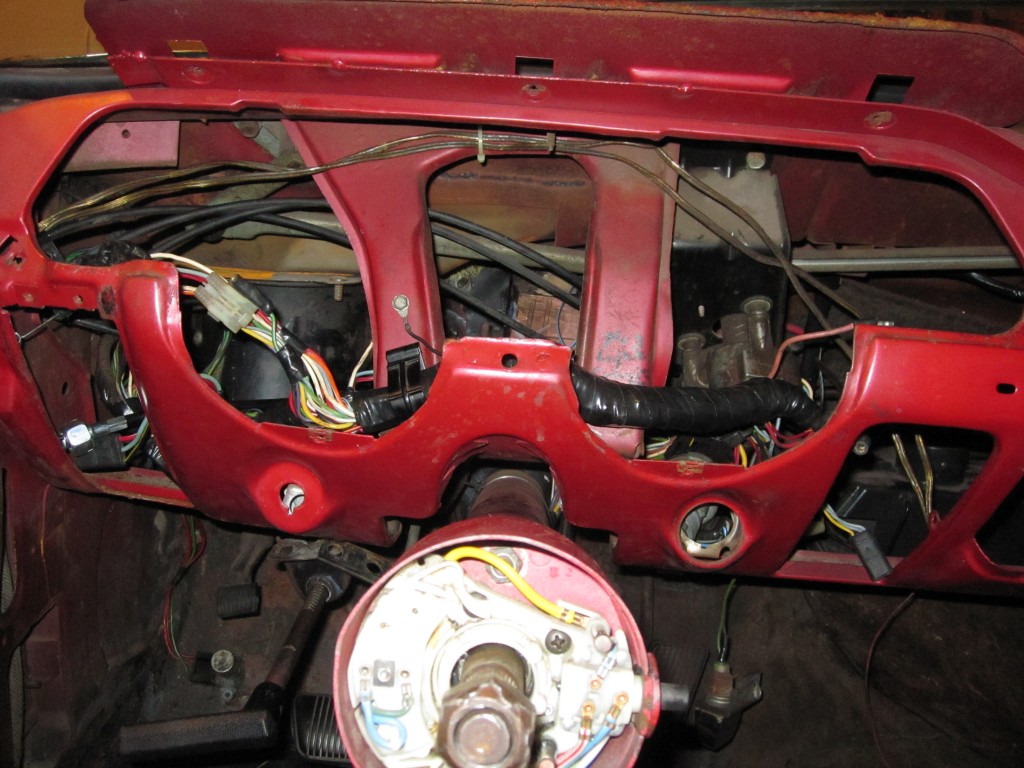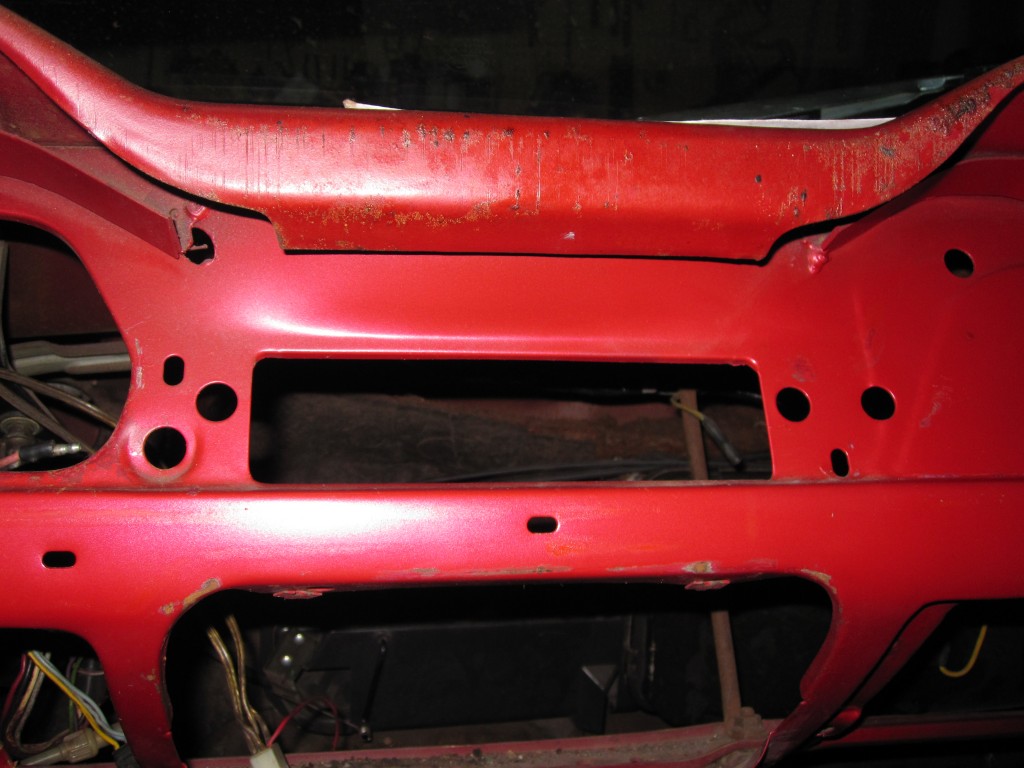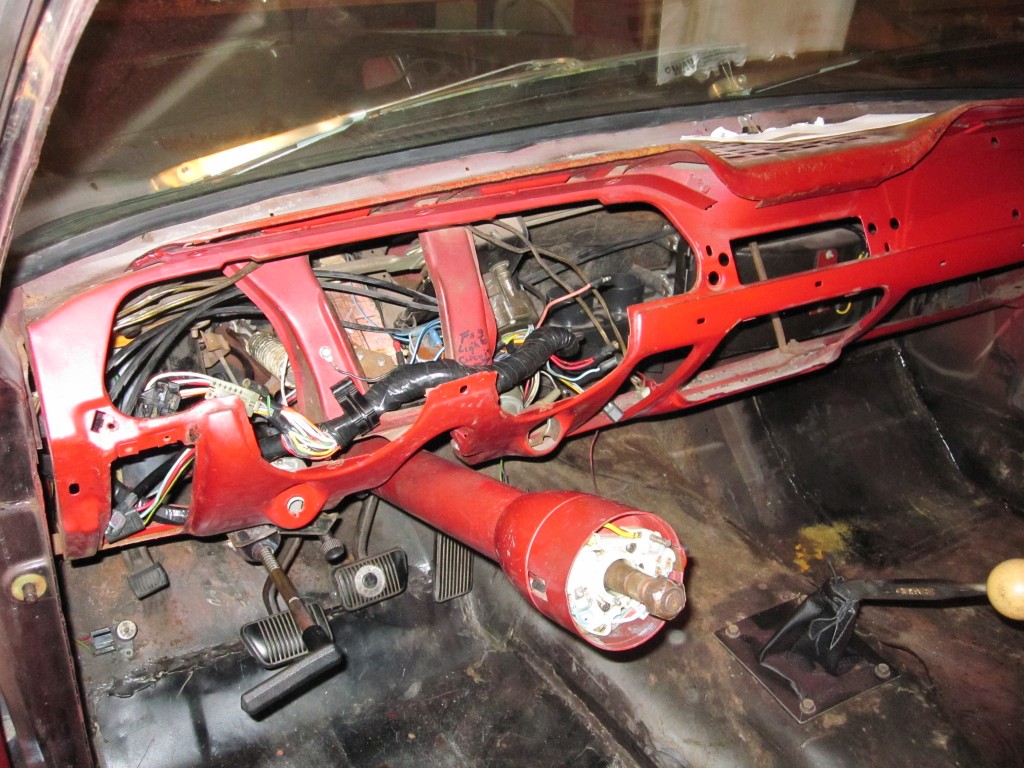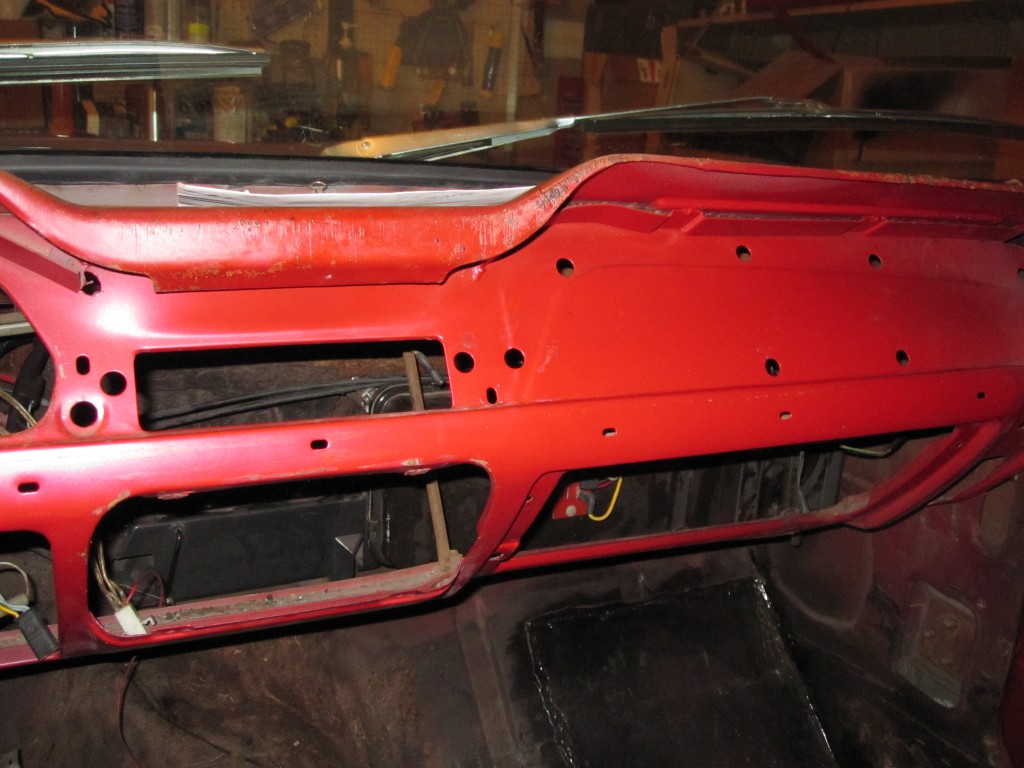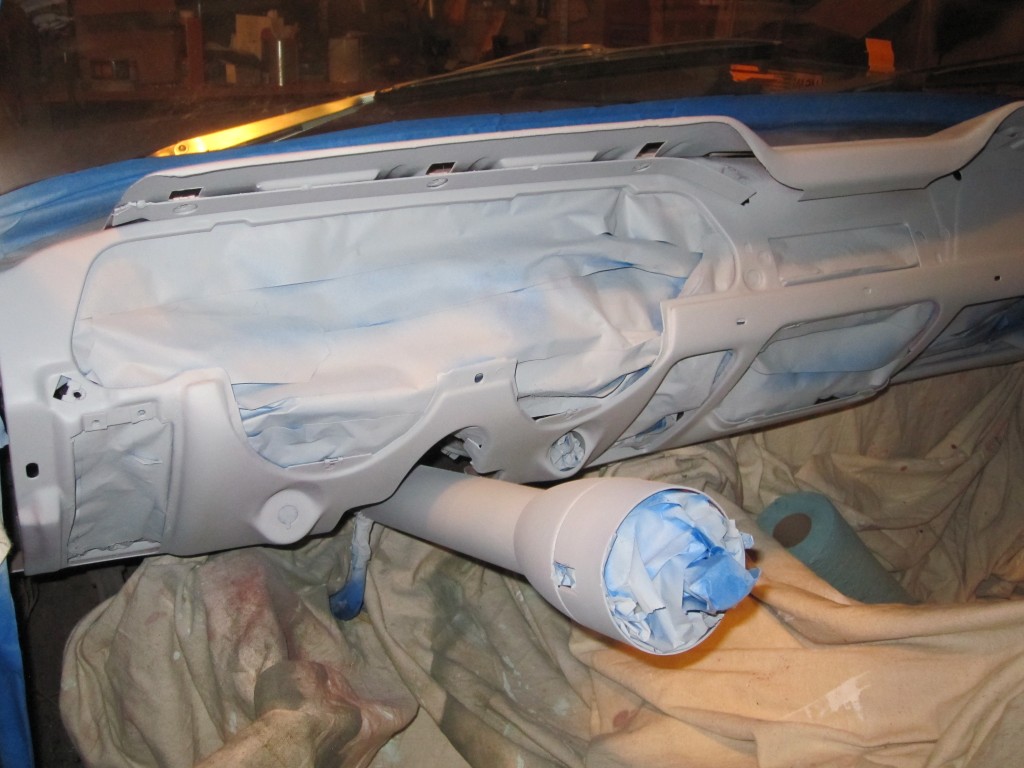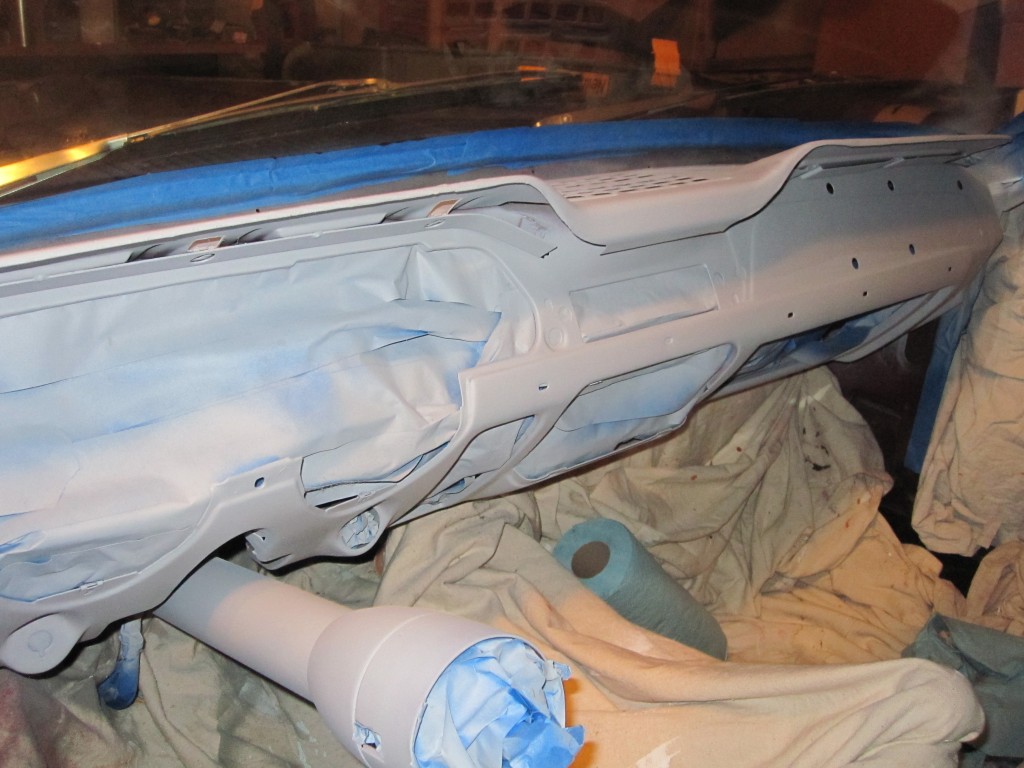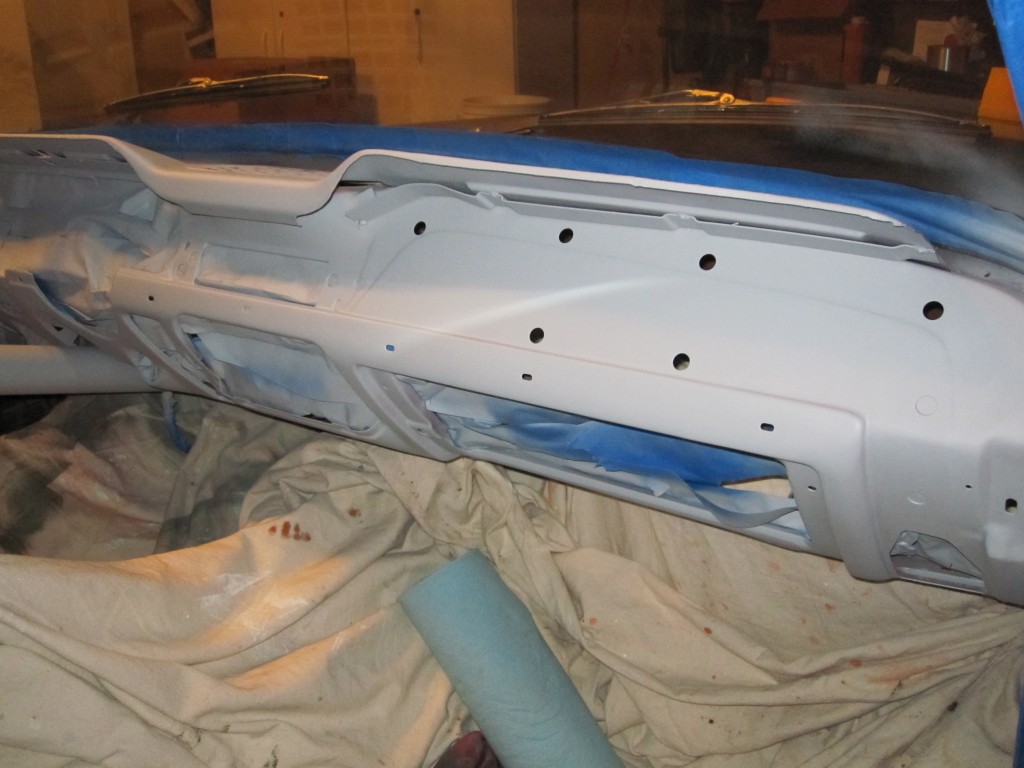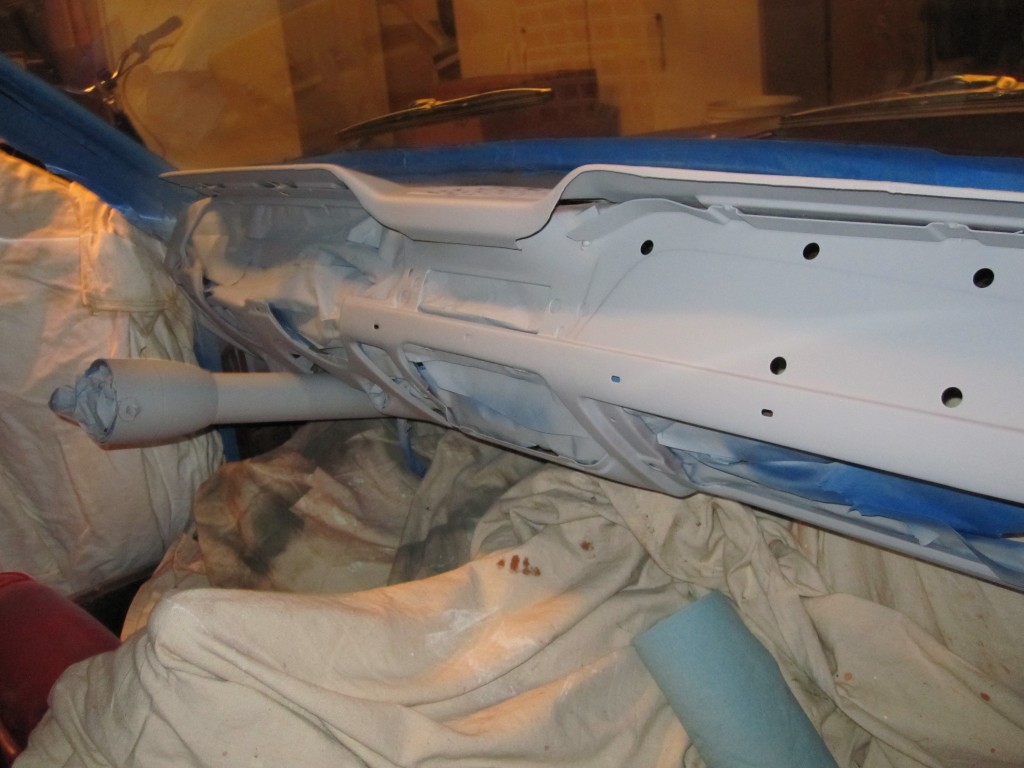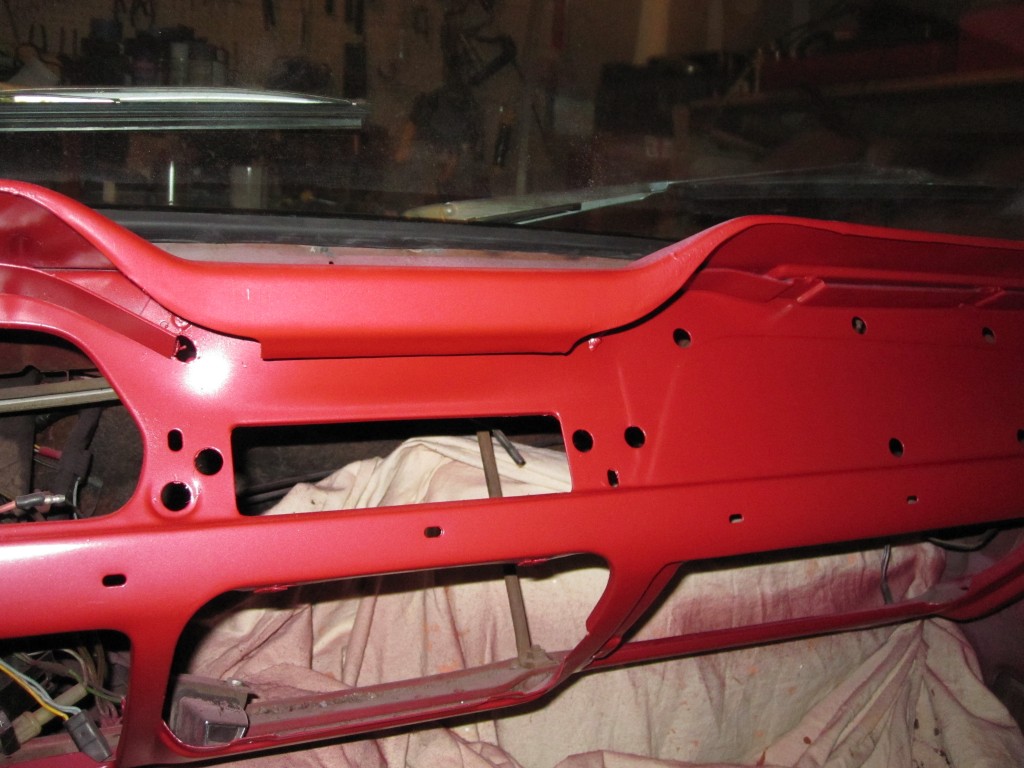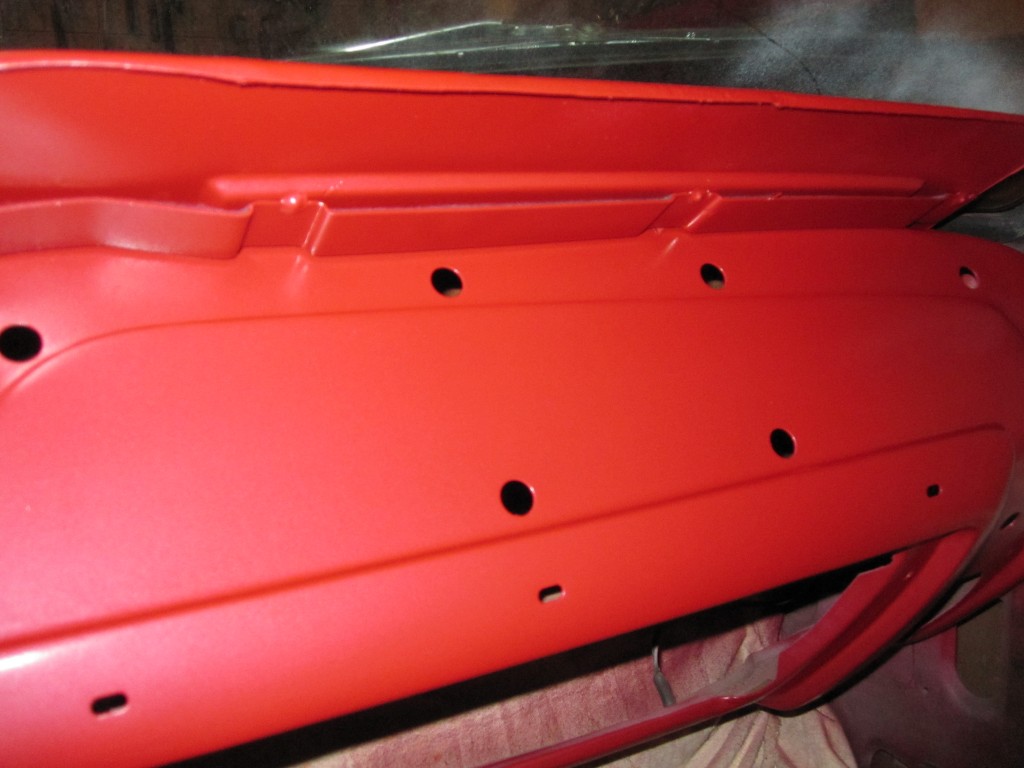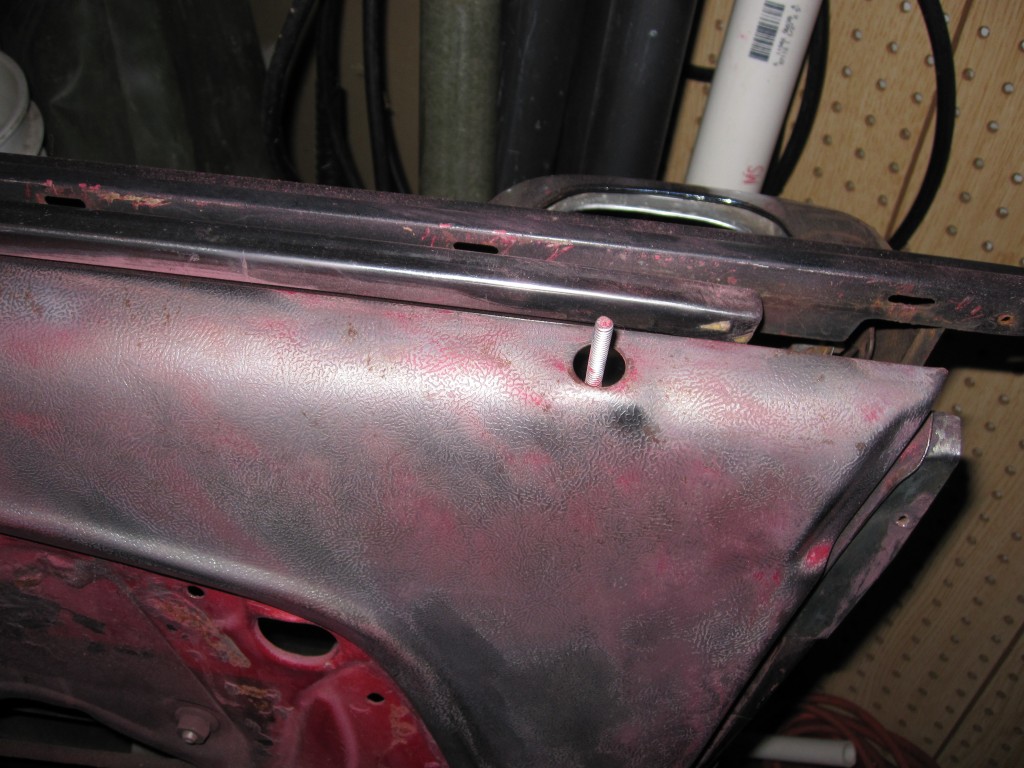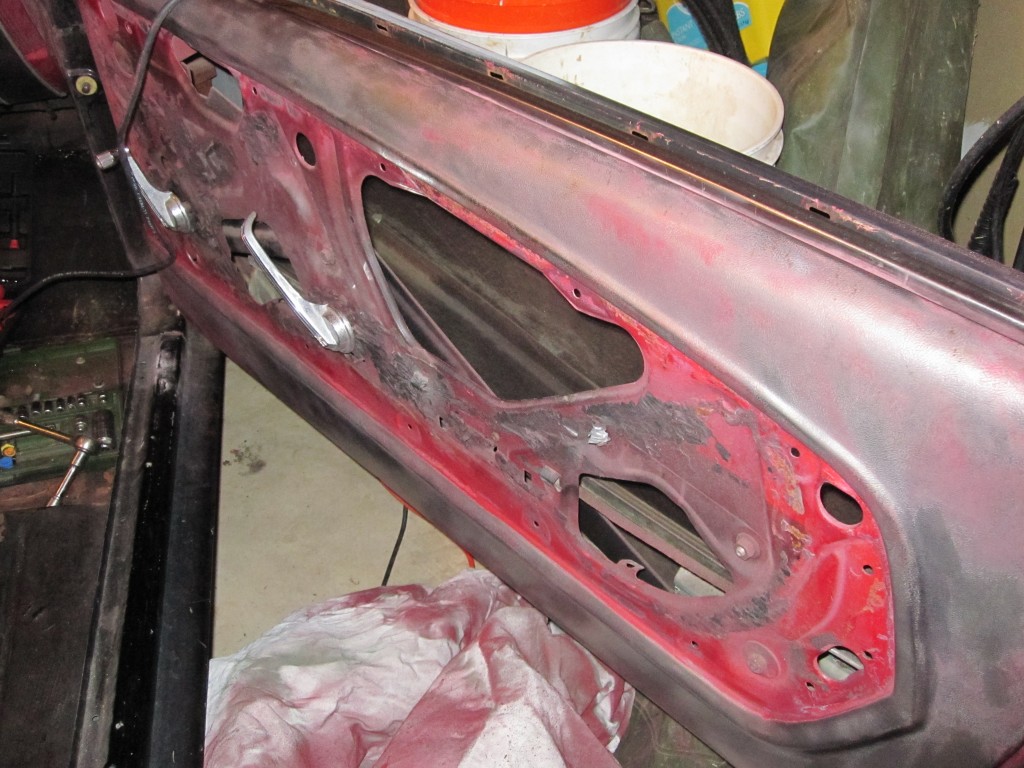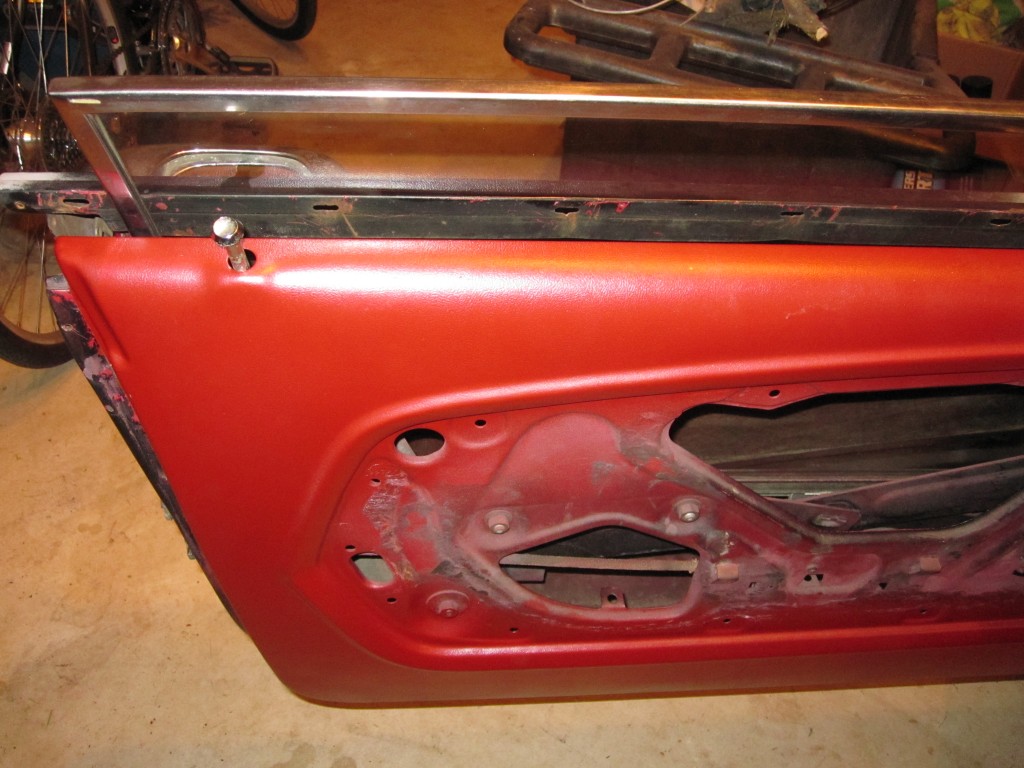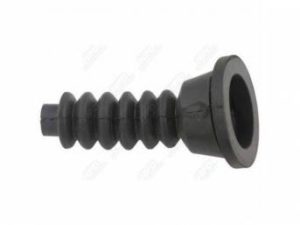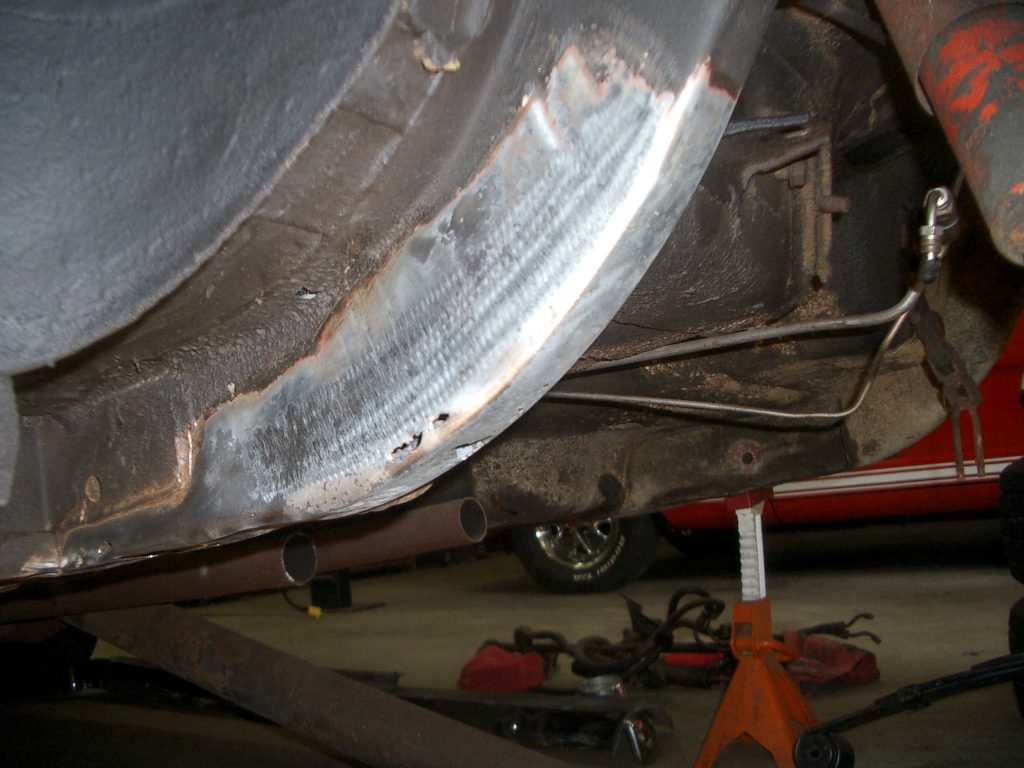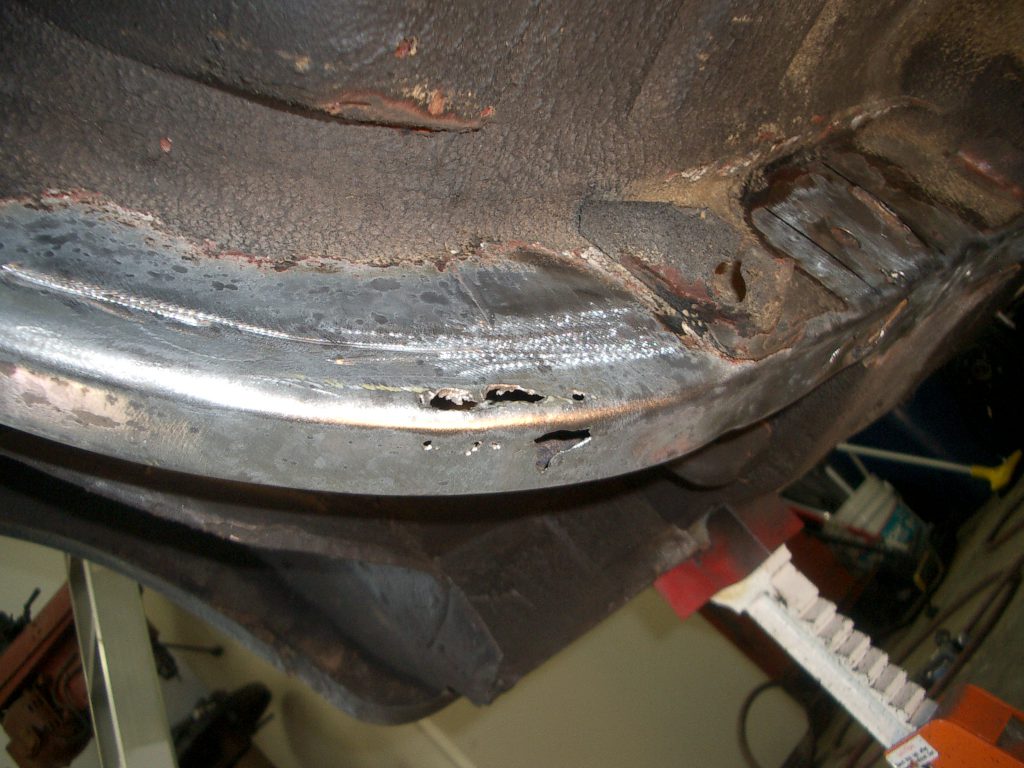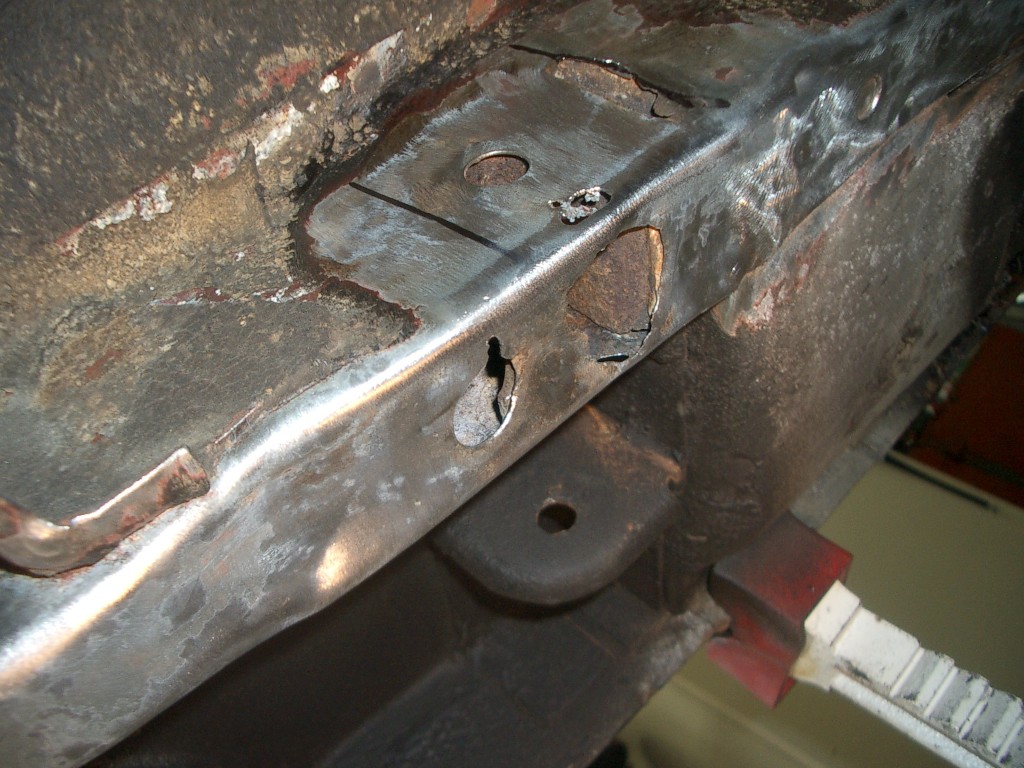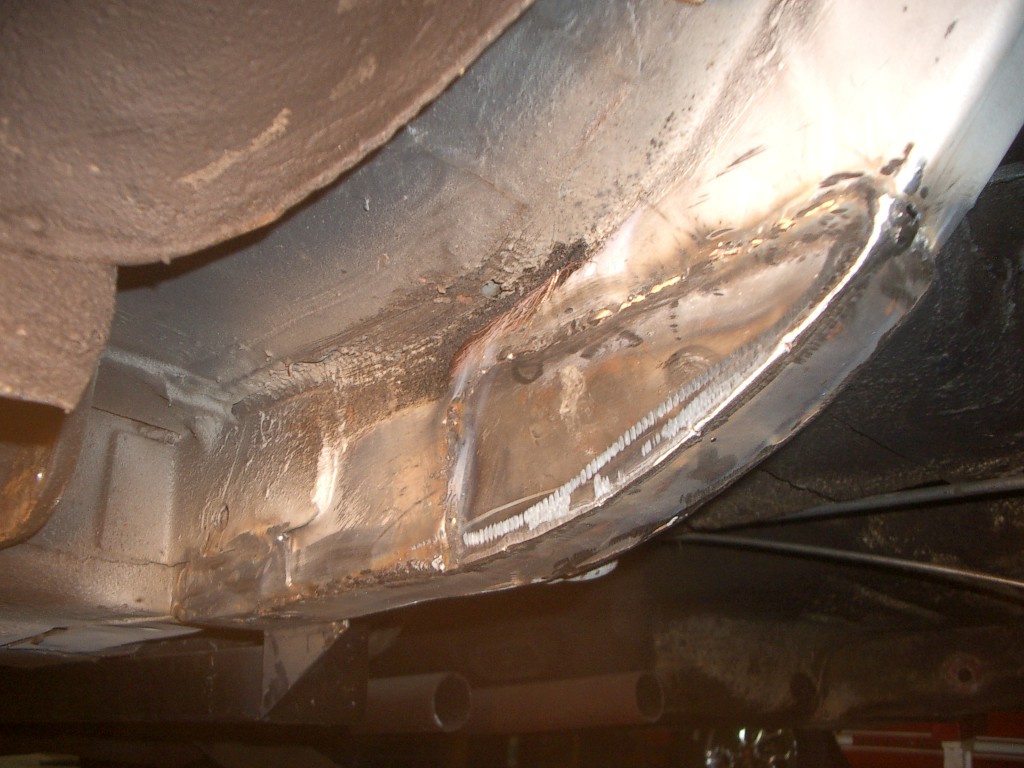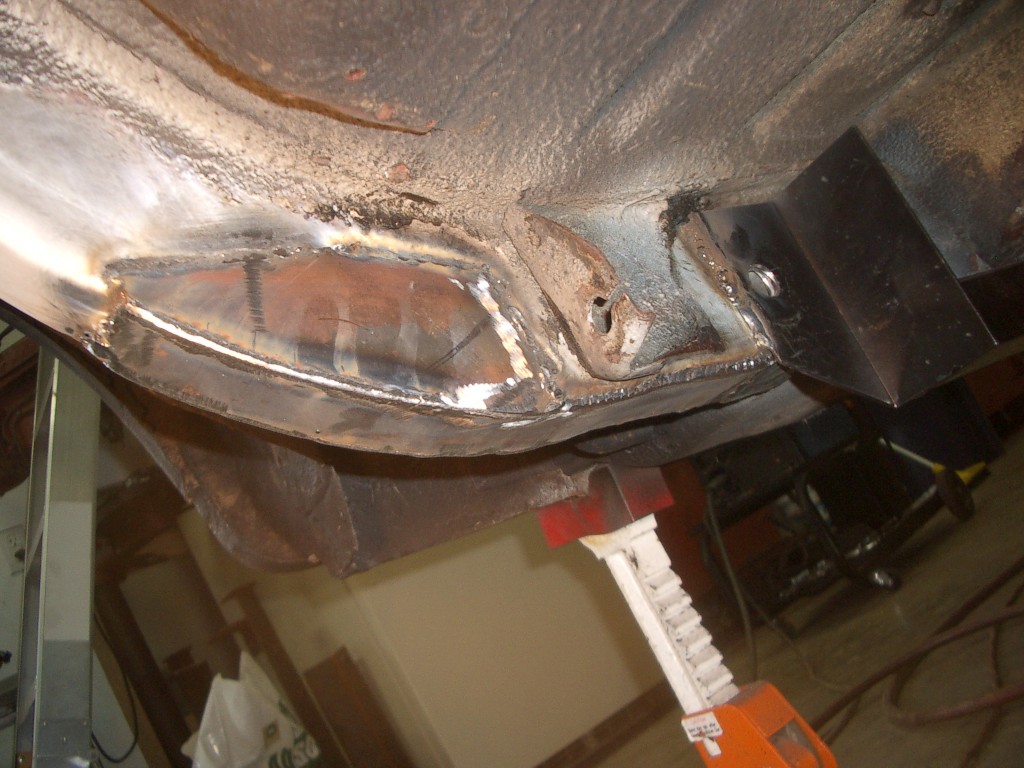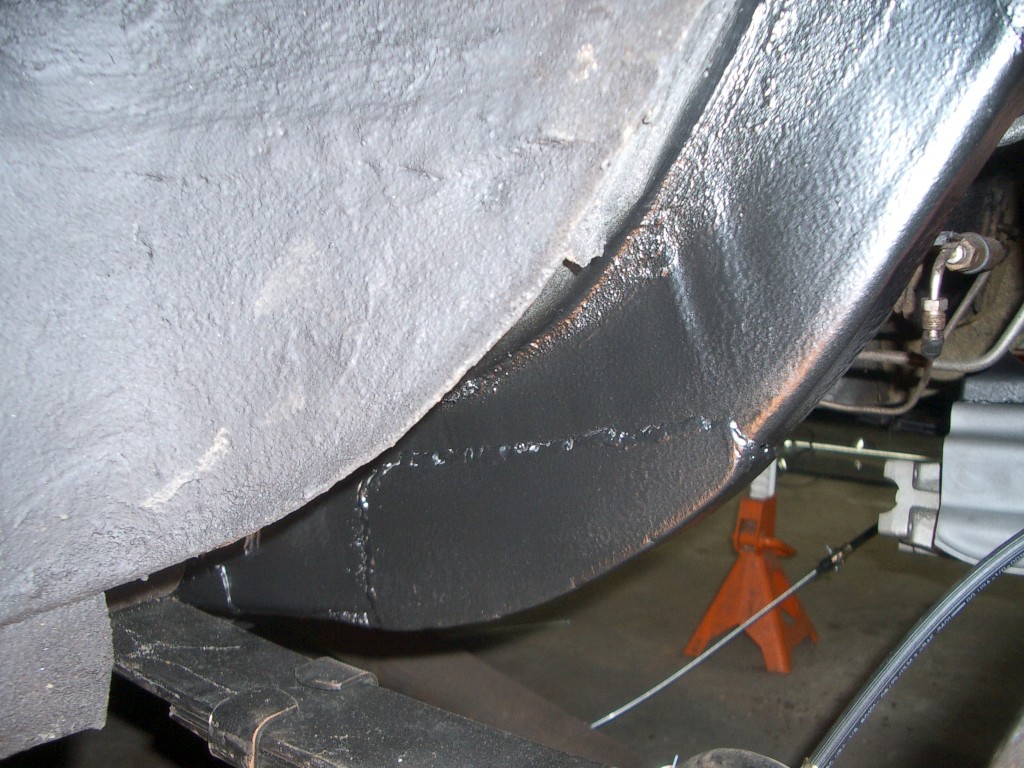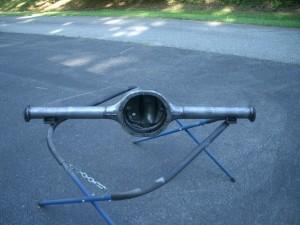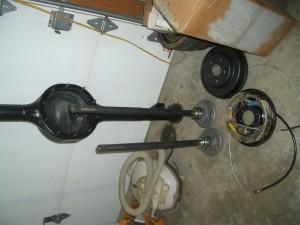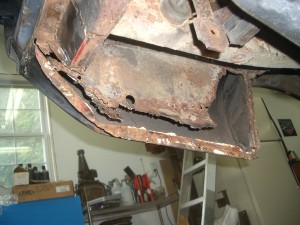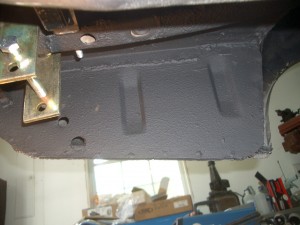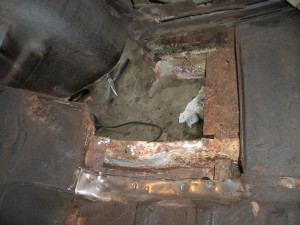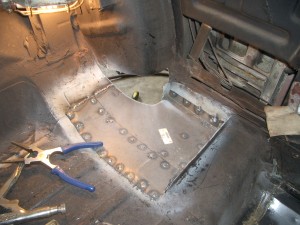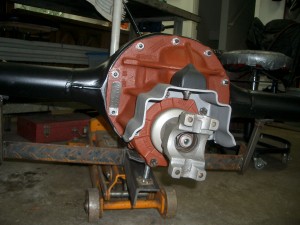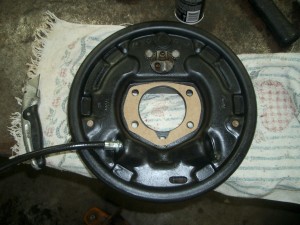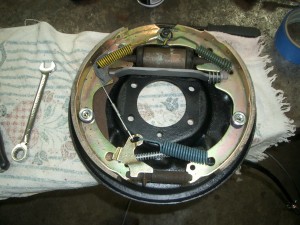After I finished painting the dash I was torn between re-assembling it or applying some sound proofing and heat barrier to the interior. I decided to continue with re-assembling the dash so as to get the car back to a drivable condition as soon as possible. The plan sounded good on paper but things don’t always go as planned. The real hold up is that I am waiting on some parts. I could put the dash back together and then remove the instrument cluster again after the parts come in. But I have plenty to do in the mean time so I decided to wait for the parts before I install the instrument cluster.
Of course the instrument cluster didn’t prevent me from installing the rest of the dash. I installed the dash pad and trim, the knee kick pad, the heater control panel, and the dash trim panels on the passenger side of the dash. The fit for some of the pieces was extremely tight. I’m attributing this to the new dash pad, which looks nice but doesn’t quite match the original. It is thicker and the embossed trim on the edges is a little bit different. But since I’m not building a concours restoration this pad will work OK. While I was assembling the dash I realized that I needed to order a few items. I thought I had screws for the instrument cluster but I didn’t. The new dash trim panel that goes over the glove box was missing a small running horse. And the glove box rubber bumpers had crumbled and fallen apart. I also wanted to replace the dash clock in the instrument cluster. Both the clock and the screws are on back-order which is why I haven’t been able to finish up the dashboard yet.
While I was working on the dash I received a delivery with my Quiet Ride AcoustiShield kit. This kit contains sound damper and heat barrier to do the interior, roof, and trunk of my car. Since the dash was on hold I decided to try and tackle this kit. The installation isn’t that difficult, but there are a lot of pieces and it is time consuming to install. Today I worked on the interior floor. I removed the seats, seat belts, shifter boot, and dimmer switch. Then I cleaned up the floor as much as I could. The kit uses Dynamat and contact cement, neither of which will adhere to dirt.
Next I laid out the pieces of Dynamat according to the instructions. The kit comes with pre-cut pieces of Dynamat and a diagram that shows you where to place them. After I had laid them all out I peeled off the backing from each piece, exposing the adhesive. Then I stuck down the Dynamat and pressed it on to the floor using the roller that was supplies in the kit. Not very difficult so far.
The next part, applying the thermal barrier, was a bit more challenging. I laid out all the pieces on the floor of the car to see where and how they would all fit. I ended up with a couple of small pieces left over. I’m hoping that it will become evident where they fit after I install the remaining parts of the kit. For the big parts I could identify I sprayed contact cement on the floor and the back of the heat barrier and glued the pieces down. The last step was to seal the seams and edges with the supplied foil tape.
The end result is not quite as perfect as I would have liked, but it came out pretty well. Tomorrow I plan to install the AcoustiShield kit for the roof of the car, and any parts of the trunk and body kits that require access through the interior. They will be much easier to install while the interior is removed. I also plan to post some pictures so you can see how it turned out.

